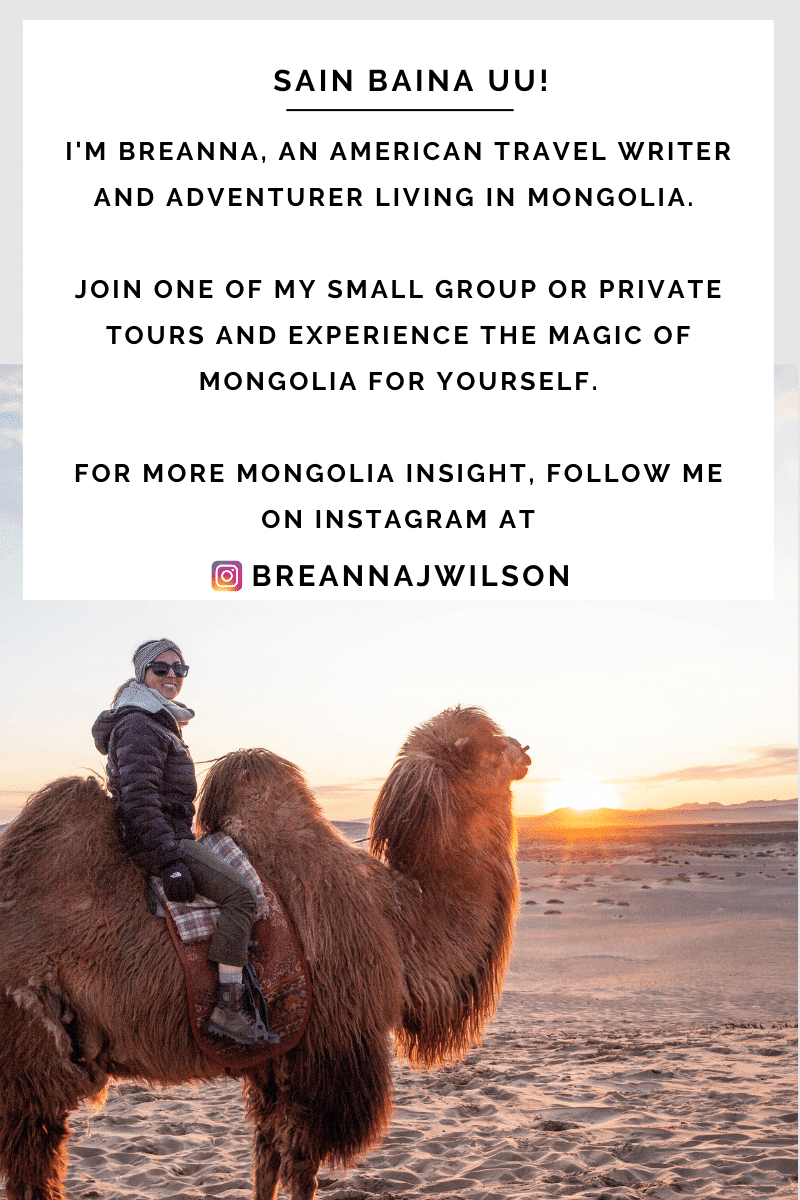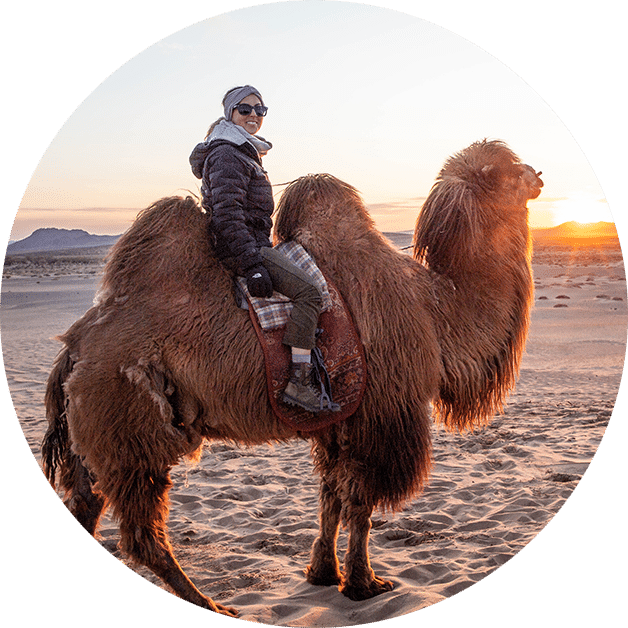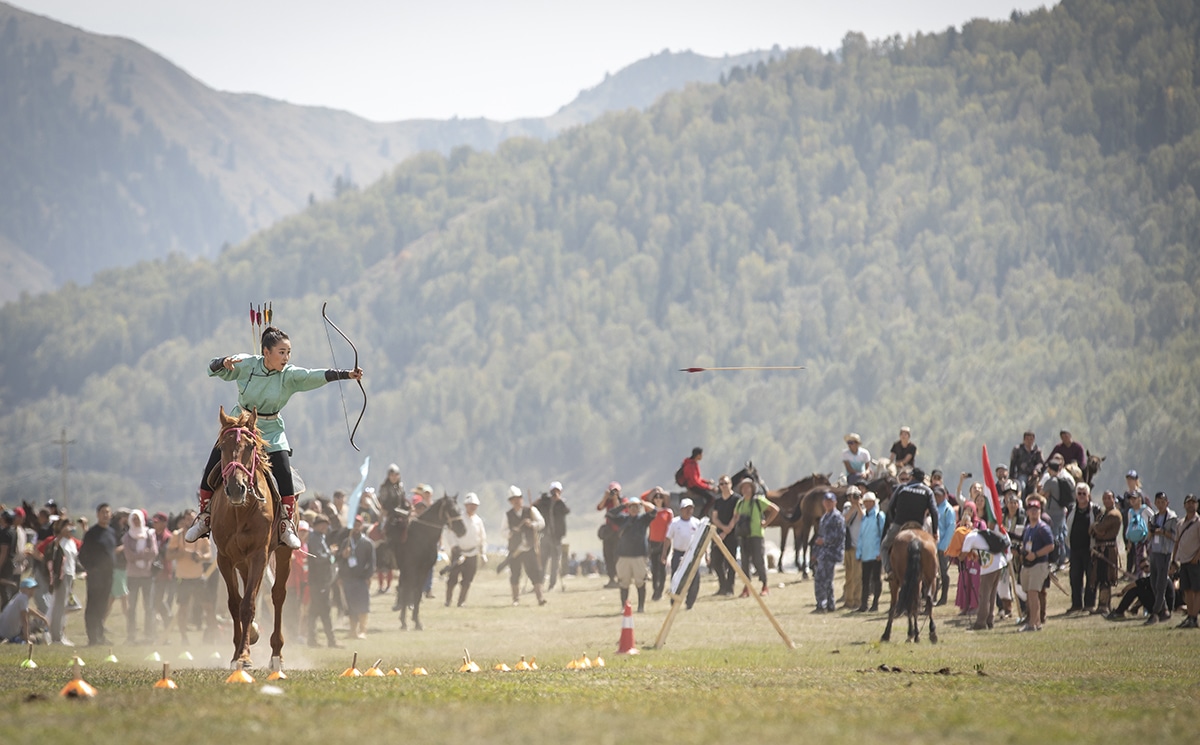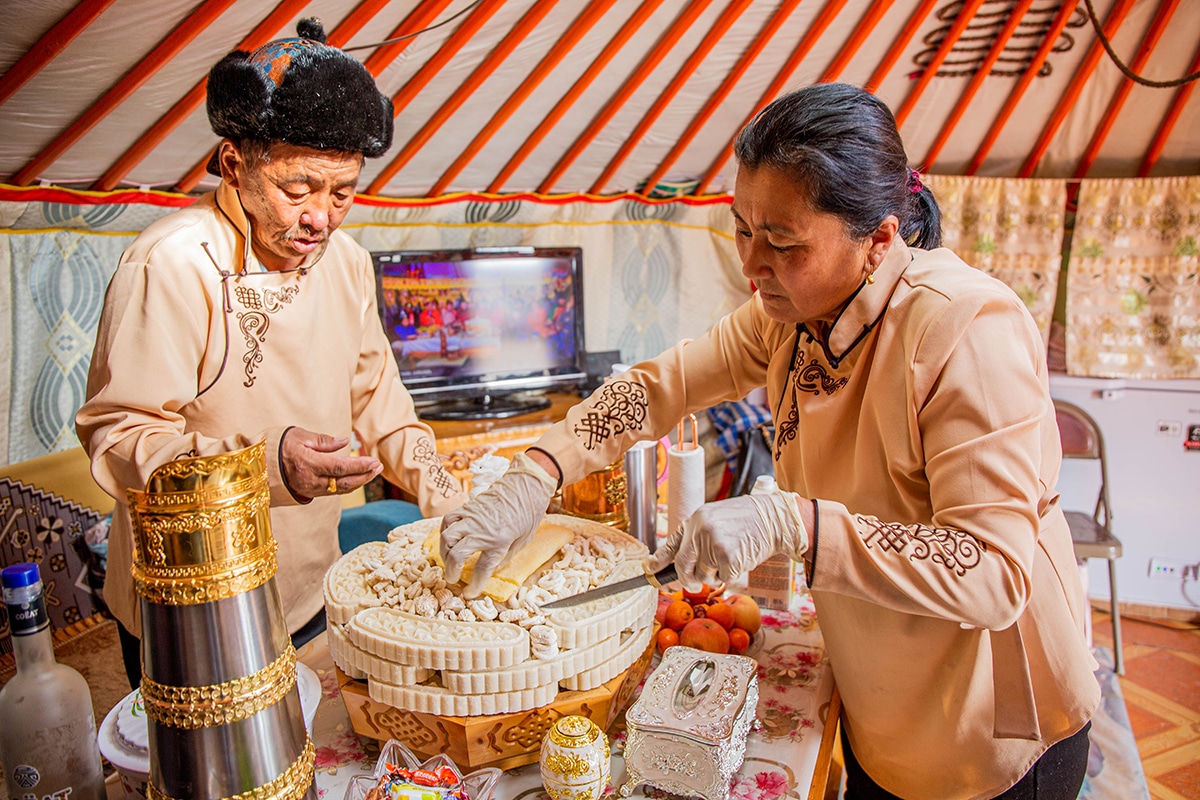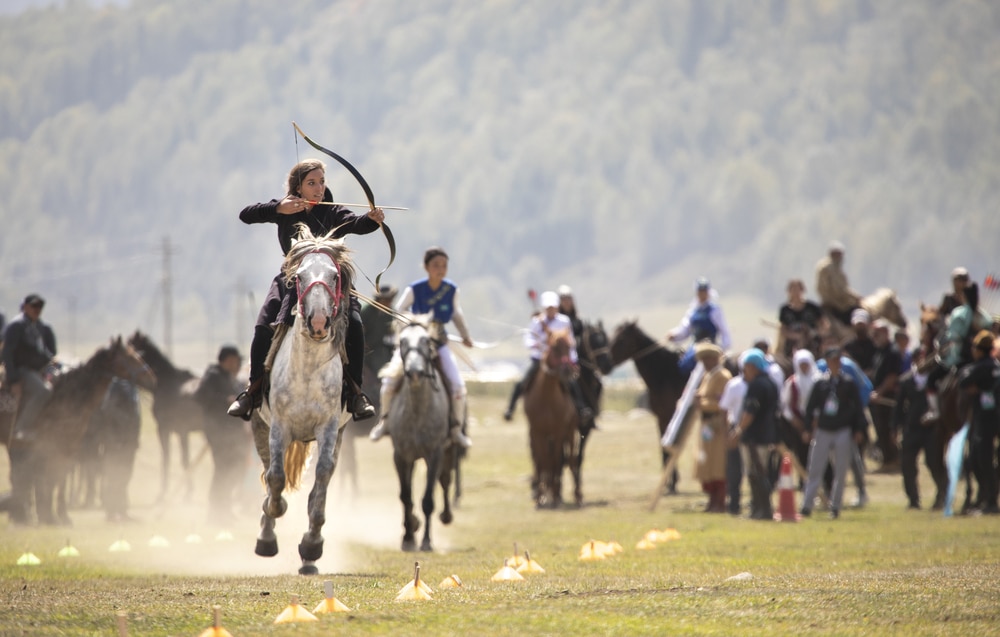11 Traditional Mongolian Foods to Know
From dumplings (buuz) to fried noodles and meat (tsuivan), we’re here to help explain the basics when it comes to Mongolian food and the traditions behind each dish.
- June 16, 2020
Table of Contents
Mongolian food is unlike the cuisine of any other culture or country. Shaped by the largely barren geographic conditions of the region, and the predominantly nomadic way of life, food in Mongolia reflects the function-first approach that the land and culture demand. Meat and milk from livestock – in particular, the Five Snouts: horses, yaks, camels, goats, and sheep – play a prominent role in traditional Mongolian food, as does their fat, the eating of which helps nomadic Mongolians endure harsh winters.
While it may seem unlike the Mongolian beef you’ve seen on menus (a dish which is in fact Chinese, as cattle is considered a winter meat out on the steppe and good luck finding mixed veggies like broccoli and onions while you’re at it), a culinary adventure through this distinctive country is one worth taking. From cooking using hot stones, to sampling entirely new-to-you proteins (marmot, anyone?), eating Mongolian food is an authentic and memorable cultural experience. And whether you’re visiting Mongolia to ride their mighty horses, experience sleeping in a ger, or stargazing in the Gobi Desert, here are 11 things you’ll almost certainly eat while visiting Mongolia.
Buuz: Dumplings
These meat-filled steamed dumplings may be the most widely known of Mongolia’s dishes, as they’re easily found both in the country’s capital and in gers across the countryside. As the main food of Mongolia’s Lunar New Year (families will spend days making thousands of dumplings for Tsagaan Sar celebrations), it’s also eaten daily throughout the country and considered one of the best dishes in Mongolian cuisine. These two-bite dumplings are typically filled with minced mutton and flavored with seasonal herbs (if available, which won’t always be the case out on the steppe) and the use of the animal fat make them especially flavorful. Like dumplings found in other Asian countries, buuz can be prepared with a range of ingredients and shaped into myriad forms, so be sure to sample them in each of the different provinces (the ones below are typical of the north) and gers when you can.

Tsuivan: Fried Noodles and Meat
Tsuivan is a fried noodle dish served with dried meat (usually mutton) and vegetables (cabbage, carrots, and potato), and is believed to have originated in China. However, thanks to frying and then steaming the meat in the same pot, the flavor of this dish is entirely unique to Mongolia. The noodles are usually made from scratch, while the meat can range from mutton, to horse, to tail fat. In the style of the nomads, whatever is on hand is what will work best. As one of the most widely eaten dishes in Mongolia, you should have no problem finding it wherever you go.
It might sound like a simple dish, but as Mongolian food blogger Nargie walks through the steps in this video, it takes the whole family getting involved in the process to serve the perfect bowl of tsuivan.
Khuushuur: Meat Hot Pocket
Another dumpling-like dish, khuushuur is more closely linked to Russian cuisine, rather than East Asian. The meat, whether it’s mutton, camel, or otherwise, is ground with onion or garlic, packed into a circle of dough, then deep fried into its final form. It can be compared to the American hot pocket, in that it’s a handheld meat-filled dough pouch, but with Mongolian ingredients instead of Italian ones. Size, shape, and protein can vary, but the best part is, it’s easy to find just about anywhere where you are in Mongolia, quickly making you a khuushuur connoisseur.

Boodog: Meat Cooked in the Carcass with Hot Stones
Mongolian barbecue has made its way to the United States, but boodog – a barbecue style in which the dish is cooked inside a carcass – remains unique to Mongolia (for reasons that we think are pretty apparent). Goat and marmot are the most popular animals to barbecue, and both are cooked by having hot stones slipped into the inside of the carcass once the meat has been separated from the skin. It’s often encountered on the steppe or anywhere outdoor activities are taking place, as boodog is typically served to groups of people on special occasions. After the meal is finished cooking, Mongolians (and willing tourists) like to rub the used stones between their hands, believing it boosts their health (and certainly does wonders if you have dried out skin).
Khorkhog: Mongolian Barbeque
This style of Mongolian barbecue is similar to using a pressure cooker, with pieces of meat put inside a lidded container (picture a large metal milk jug) alternating layers of meat with large hot stones and covering the concoction with water. If you’re lucky, potatoes are added into the layers as well, becoming nice and tender through the cooking process. The jug is placed over a fire and is left alone for one to two hours. Though unlikely to be encountered in restaurants, khorkhog is a popular countryside dish, and like boodog, this dish is served up pretty much straight from the cooking vessel, stones and all.
Guriltai Shul: Noodle and Meat Soup
This meat-based noodle soup is another traditional favorite, typically featuring a clear mutton stock, vegetables, and of course, hand-made noodles. Guriltai shul has two primary flavor profiles: acidity from yak’s milk curds, and raw umami from the meat. For those who don’t know, mutton comes from sheep over a year old, versus lamb, which is meat from a sheep under a year old. This soup is considered to be very nutritious, particularly because of its use of vegetables, a rare inclusion in Mongolia. Like most Mongolian dishes, guriltal shul isn’t rich in spices, but this light soup is packed full of flavor nonetheless. Sipping on a bowl of this stuff around the ger stove after a long day of helping with animals or driving through the countryside just warms your soul.
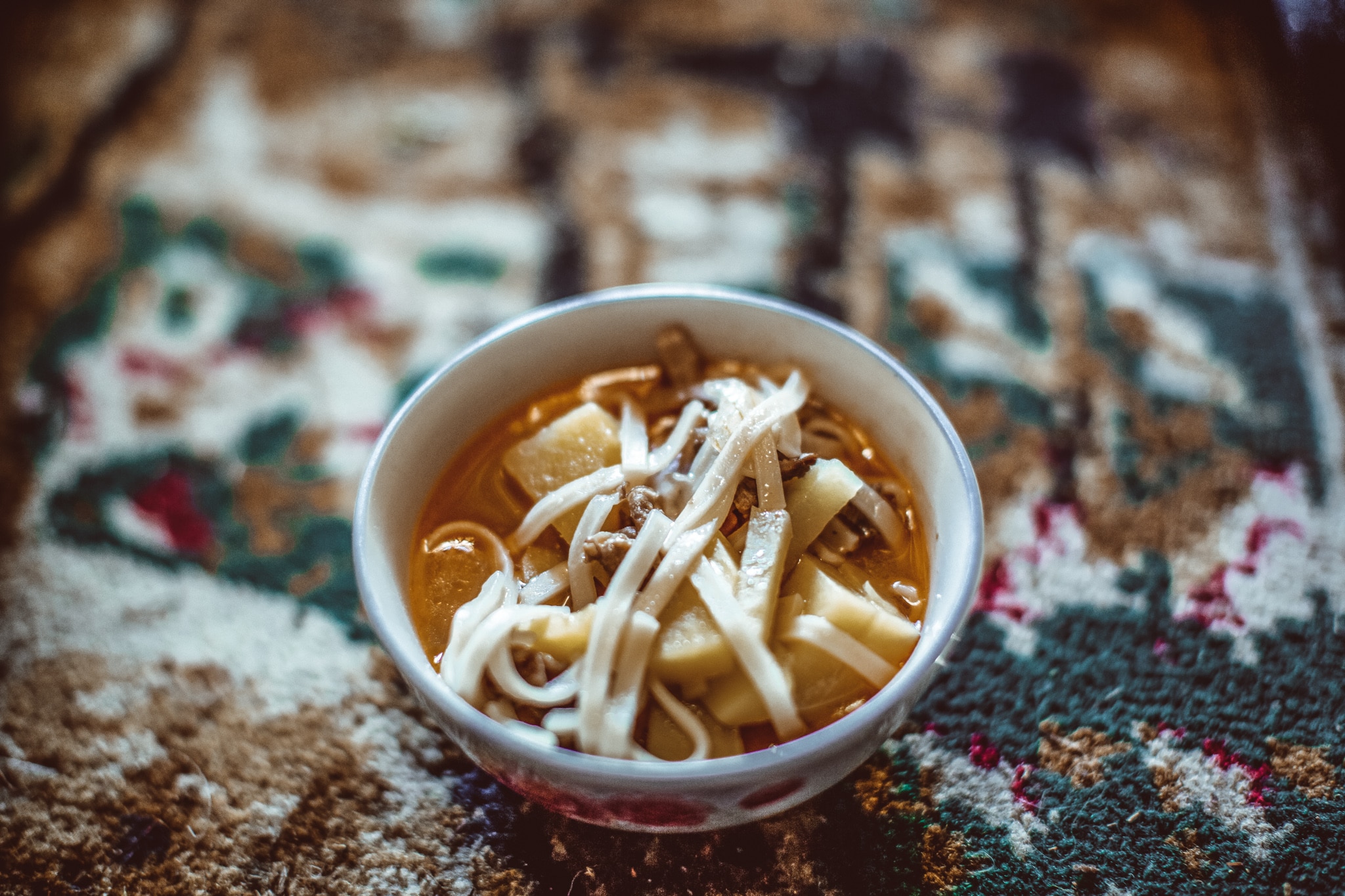
Boortsog: Fried Dough
Salt, sugar, water, butter, and flour become this fried dough treat, most often eaten with sugar, butter, or yogurt. Eaten throughout Central Asia and often equated with donuts, in Mongolia boortsog is more commonly dipped in tea (suutei tsai), like a biscuit or cookie. Typically cut into small squares or triangles, these flattened pieces of dough are then quickly fried in mutton fat or vegetable oil (depending on what the herder has on hand) and served in a bowl passed around the ger.
Aaruul: Dried Cheese Curds
Commonly eaten in summer, aaruul is one of the primary dishes consumed by the nomadic peoples of Mongolia. Sheep, goat, cow, and yak are the most common providers of the milk needed to make aaruul, which can be flavored with herbs for a savory serving, or sugar and fruit for a sweeter preparation. Unlike the salty curds popularized in Canada and the Northern United States, aaruul has sour notes that make it stand out. No matter the form in which its presented – hard, soft, oily, sweet – you will benefit from the vitamins and calcium that have kept the teeth of nomadic Mongolians strong for centuries.
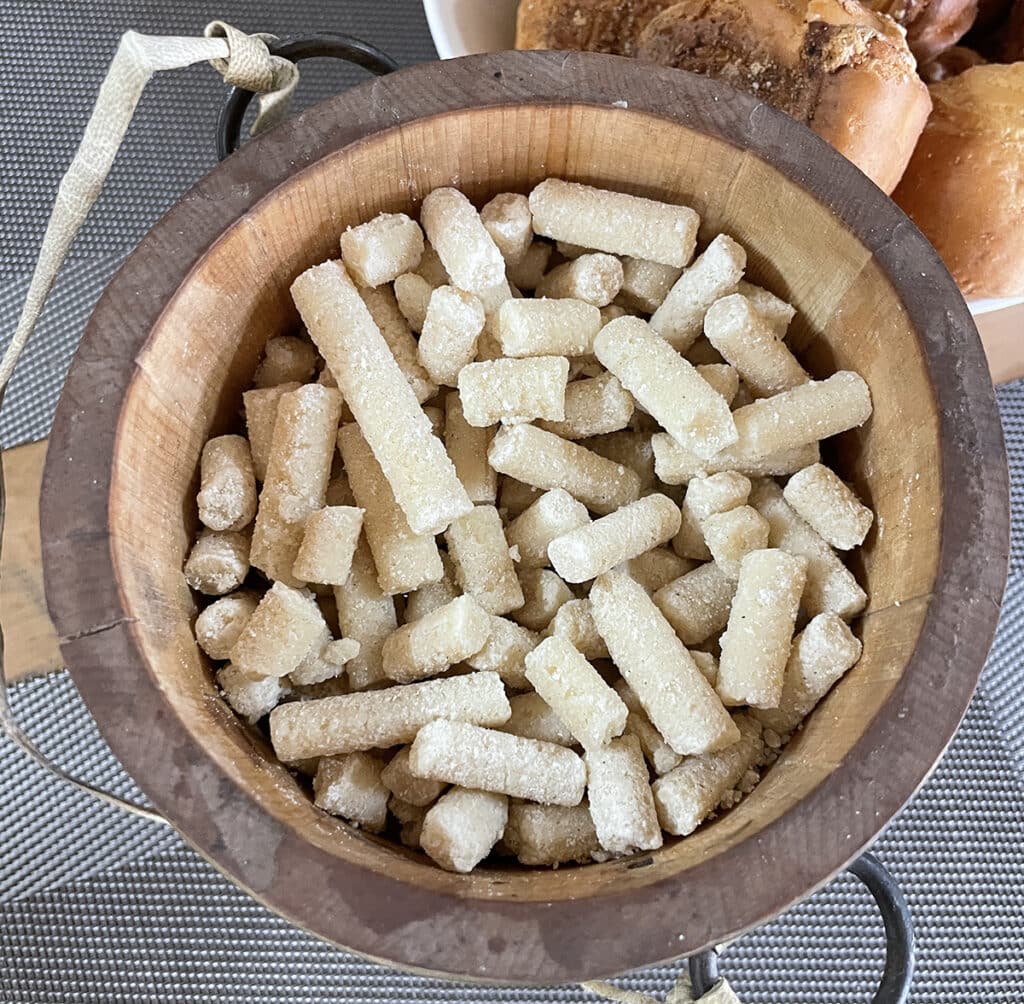
Yak Butter and Yak Yogurt
Because cattle aren’t hardy enough for the steppes of Mongolia, the heavily-furred yak plays a more prominent role in Mongolian life and cuisine. Yaks produce a rich milk perfect for fueling hard working nomads living in extreme climates, and it lends itself well to other dairy products like butter and yogurt. The high fat content makes the butter closer in consistency to cheese, while the yogurt is thick with a sour flavor, though it’s sometimes served with sugar to complement the natural flavor.

Suutei Tsai: Salty Milk Tea
This milk tea is unlike other milk teas found in Eastern Asia, with which Americans may be more familiar. In Mongolia, tsai is traditionally a herder’s drink, made from a simple recipe that includes salt, which creates a flavor profile that can take time for foreigners to become accustomed to. However, it’s a common beverage usually served with meals, including many of the dishes listed here, and is often offered by hosts to their guests, especially upon entering a family’s ger. The popularity of tsai means you will encounter it throughout the country, and you can even take some home in the form of a dehydrated packet.
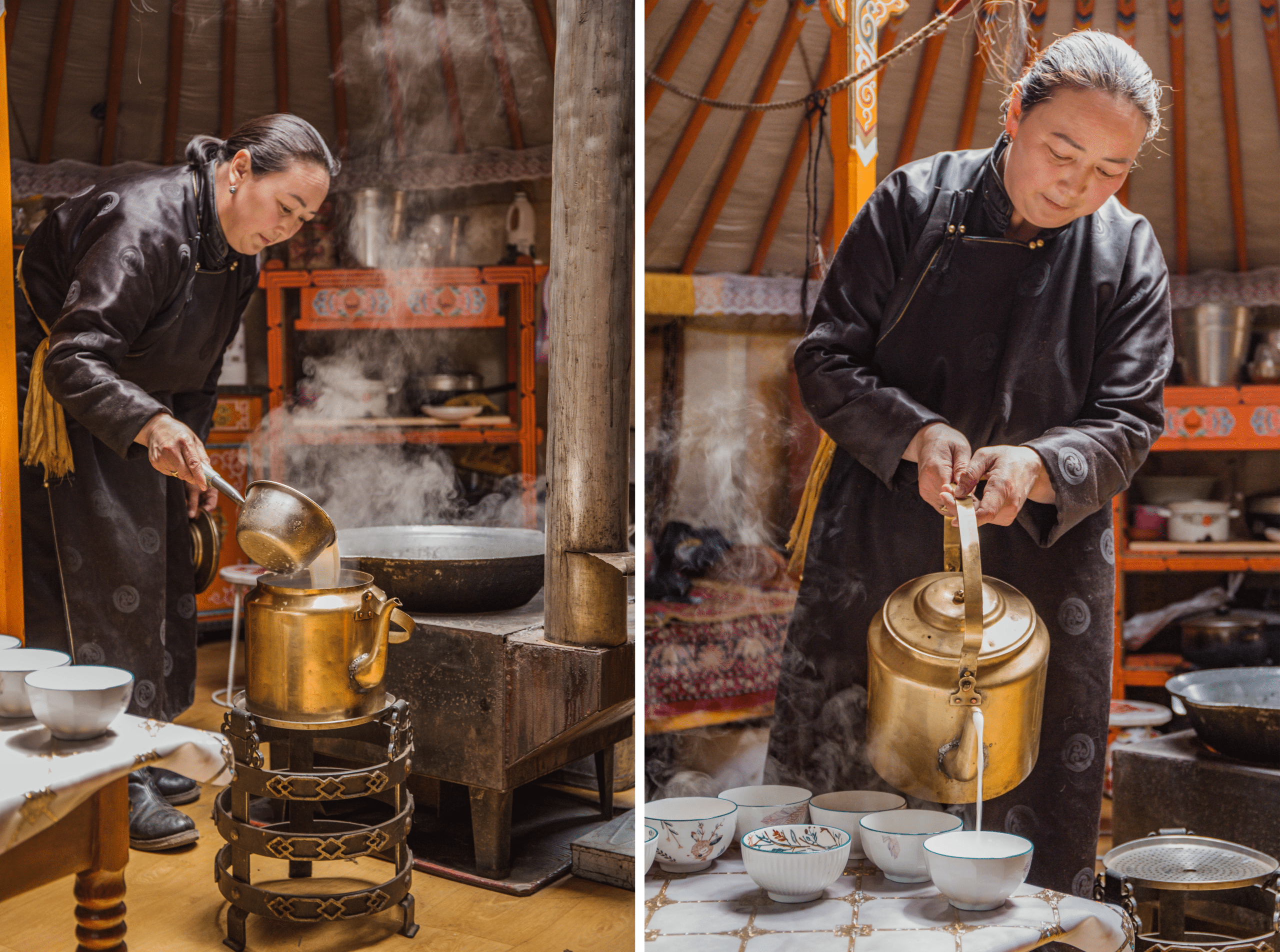
Airag: Fermented Mare’s Milk
The national drink of Mongolia is consumed predominantly in the summer in rural areas, though it appears during special events throughout the year. This alcoholic beverage comes from the coveted mare’s milk, which is then fermented in an open leather sack called a khukhuur. Airag is said to improve overall health when consumed in moderation and plays an important role at celebrations and summer festivals such as Naadam. With horses playing such a significant role in Mongolian culture, airag is another tradition tied to these godly animals that makes Mongolia the unique and special place it is. Especially for adventurous eaters and drinkers.

Author: Breanna Wilson
Hi! Sain uu! I’m Breanna, an American travel writer and adventurer living in Ulaanbaatar, Mongolia for more than 5 years. I’ve written for and been featured in Condé Nast Traveler, CNN, Forbes, and the New York Times, among others. Read more of my Mongolia travel articles here.
Join my Private Travel Group on Facebook
Proudly Based in Ulaanbaatar, Mongolia
© 2024 Meanwhile in Mongolia

